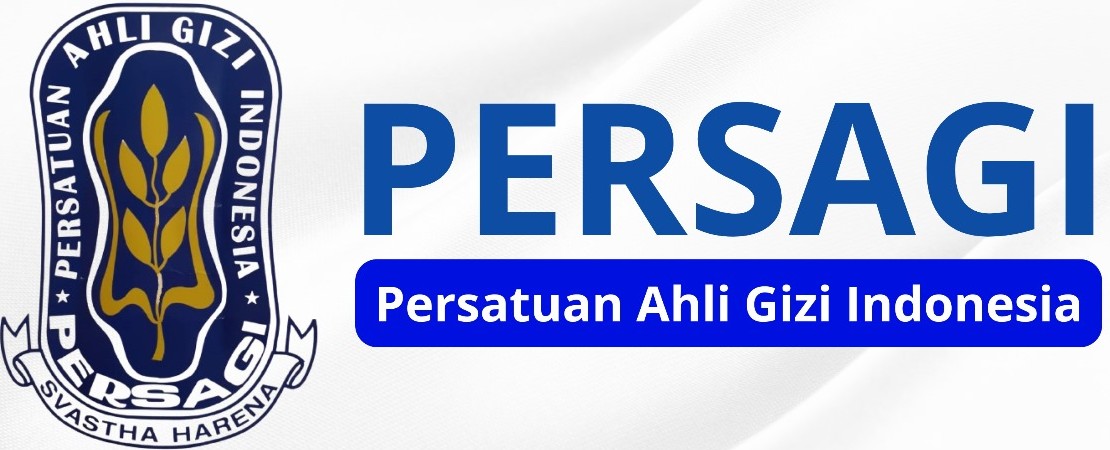Potensi Bahan Pangan Lokal Indonesia Sebagai Pangan Fungsional Dan Manfaatnya Bagi Kesehatan :Review
Abstract
Background: Indonesia is a country known for its abundant natural resources. Recently, since the problem of the Covid-19 pandemic that has occurred in the world, functional food has begun to be studied and utilized in the health sector Functional food is a food or food ingredient that has a good function for public health in addition to the basic nutritional functions in the food. Local food ingredients in Indonesia have great potential that can be utilized to become functional food that will have a good effect on world health. Purpose: This article review aims to serve as a forum for information that discusses and analyzes the role and benefits of Indonesian functional food ingredients for health. Research Methods: The method used by a review of the literature from various scientific sources from several scientific journal articles related to functional food. Results: Functional food has an impactful role in the health sector associated with its bioactive components that are beneficial to health such as antihypertensive, antioxidant, and anti-anemia, which is why functional food was used in various industrial and health fields such as food products, food supplements, and medicine. Conclusion: The potential of available food is very beneficial for health in terms of its physiological function. Hopefully, this study on the role of functional food in the world of health can become a means and information to improve the level of public health, especially in Indonesia.
Keywords
Full Text:
PDFReferences
Yuniastuti A. Peran Pangan Fungsional Dalam Meningkatkan Derajat Kesehatan. Pros Semin Nas Int [Internet]. 2014;1(12):1–11. Available from: http://download.portalgaruda.org/article.php?article=179200&val=426&title=peran pangan fungsional dalam meningkatkan derajat kesehatan
bpom. persyaratan penambahan zat gizi dan zat nongizi dalam pangan olahan. Badan Pengawas Obat dan Makanan. 2021;11:1–16.
Herlina E, Nuraeni F. Pengembangan produk pangan fungsional berbasis ubi kayu (manihot esculenta) dalam menunjang ketahanan pangan [Development of functional food product based on cassava (manihot esculenta) in supporting food resistence]. Eka dkk/J Sains Dasar. 2014;3(2):142–8.
Khoerunisa TK. Review : Pengembangan Produk Pangan Fungsional Di Indonesia Berbasis Bahan Pangan Lokal Unggulan. Indones J Agric Food Res. 2020;2(1):49–59.
Hartati FK, Djauhari AB.Heuristic. 2017;14(02).
Kusumayanti H, Triaji R, Bagus S. Pangan Fungsional Dari Tanaman Lokal Indonesia. J Metana. 2018;12(01):26–30.
Sihite NW, Rotua M. Edukasi Gizi Seimbang dan Hubungannya dengan Penyakit Degeneratif pada Lansia. Randang Tana J. 2022;5(3):151–7.
Helmalia AW, Putrid P, Dirpan A. Potensi Rempah-Rempah Tradisional Sebagai Sumber Antioksidan Alami Untuk Bahan Baku Pangan Fungsional). Canrea J Food Technol Nutr Culin J. 2019;2(1):26–31.
Darawati M, Riyadi H, Damayanthi E, Kustiyah L, Kemenkes Mataram P, Prabu Rangkasari J, et al. Pengembangan pangan fungsional berbasis pangan lokal sebagai produk sarapan untuk remaja gemuk (the development of functional food product based on local food as breakfast for overweight/obese adolescents). J gizi pangan. 2016;11(1):43–50.
Pandiangan fi, oslo ea, josephine, Anwar RN. A review on the health benefits of kelakai (Stenochlaena palustris). J Funct Food Nutraceutical. 2022;4(1):1–16.
S RR, Aulia N, Batara A. Potensi Rempah-Rempah sebagai Minuman Fungsional Sumber Antioksidan dalam Menghadapi Pandemi Covid-19. J ABDI. 2021;3(1):30–42.
Pratiwi E. Studi pembuatan teh daun benalu kopi (Loranthus Parasiticus) dengan tingkat konsentrasi sari belimbing wuluh sebagai minuman fungsional. Univ Andalas Padang [Internet]. 2014;1(1):200. Available from: http://scholar.unand.ac.id/4679/
Sari AN. Berbagai Tanaman Rempah Sebagai Sumber Antioksidan Alami. Elkawnie. 2016;2(2):203.
Redi Aryanta IW. Manfaat Jahe Untuk Kesehatan. E-Journal Widya Kesehat. 2019;1(2):39–43.
Ervina M, Nawu YE, Esar SY. Comparison of in vitro antioxidant activity of infusion, extract and fractions of Indonesian Cinnamon (Cinnamomum burmannii) bark. Int Food Res J. 2016;23(3):1346–50.
Abdullah B. Peningkatan Kadar Antosianin Beras Merah Dan Beras Hitam Melalui Biofortifikasi / Increasing Anthocyanin of Red and Black Rice through Biofortification. J Penelit dan Pengemb Pertan. 2017;36(2):91.
Ginting E, Utomo JS, Yulifianti R. Potensi Ubijalar Ungu sebagai Pangan Fungsional. Iptek Tanam Pangan. 2011;6(1):116–38.
Husna N El, Novita M, Rohaya S. Anthocyanins Content and Antioxidant Activity of Fresh Purple Fleshed Sweet Potato and Selected Products. Agritech. 2013;33(3):296–302.
Sihite NW, Chaidir MS. Tingkat Kecukupan Protein dengan Kejadian Stunting Balita di Puskesmas 11 Ilir Palembang. Darussalam Nutr J. 2022;6(1):37–47.
Christopher M, Debora S, Louisa E. Efek Skopoletin dari Ekstrak Buah Mengkudu (Morinda Citrifolia) sebagai Modalitas Herbal dalam Penanganan Preeklamsia. Essent Essence Sci Med J. 2022;19(2):14.
Rahayu MAD. Pemanfaatan Daun Kelakai Sebagai Teh Penambah Darah. J Ilm Kanderang Tingang. 2017;8(1):8–10.
Adawiyah R, Rizki MI. Aktivitas Antioksidan Ekstrak Etanol Akar Kelakai Asal Kalimantan Tengah. Pharmascience [Internet]. 2018;5(1):71–7. Available from: https://ppjp.ulm.ac.id/journal/index.php/pharmascience/article/view/5788
DOI: https://doi.org/10.31983/jrg.v11i2.9488
Article Metrics
Refbacks
- There are currently no refbacks.
Pengindeksan :
Jurnal Riset Gizi oleh http://ejournal.poltekkes-smg.ac.id/ojs/index.php/jrg disebarluaskan di bawah Lisensi Creative Commons Atribusi-BerbagiSerupa 4.0 Internasional.

.png)

.png)
.png)
.png)













